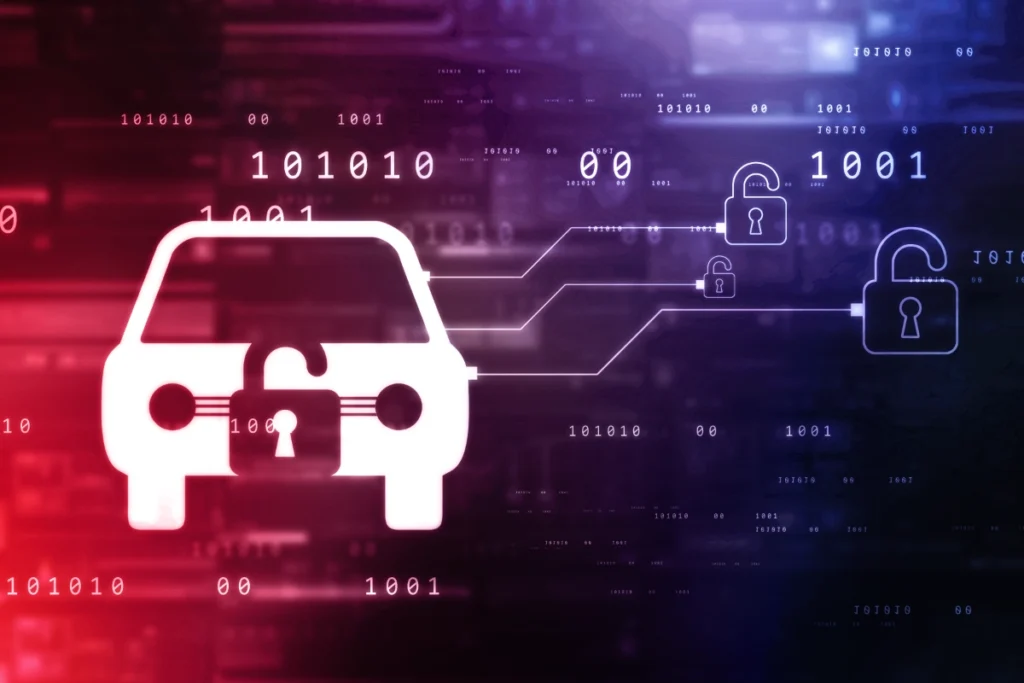Cybersecurity for Autonomous Vehicles

Autonomous vehicles (AVs) represent a leap forward in transportation technology, promising safer roads, reduced traffic congestion, and greater accessibility. However, their reliance on interconnected software, sensors, and communication networks makes them vulnerable to cyberattacks. As AVs transition from prototypes to mainstream use, robust cybersecurity frameworks are critical to safeguarding passengers, infrastructure, and data.
Why Cybersecurity is Critical for Autonomous Vehicles
Autonomous vehicles depend on three core systems, each presenting unique security risks:
- Sensors and Perception Systems
LiDAR, cameras, and radar collect real-time environmental data. Manipulating these inputs (e.g., spoofing sensor signals) could trick AVs into misinterpreting obstacles or traffic conditions. - Vehicle-to-Everything (V2X) Communication
AVs share data with other vehicles, traffic lights, and cloud systems. Unsecured V2X networks are prime targets for eavesdropping, data tampering, or denial-of-service attacks. - Control Systems
Steering, braking, and acceleration are managed by software. Compromising these systems could allow hackers to take control of the vehicle.
A single breach could lead to catastrophic outcomes, including collisions, privacy violations, or large-scale fleet disruptions.
Key Cybersecurity Challenges
- Complex Attack Surfaces
AVs integrate hundreds of connected components (e.g., infotainment systems, telematics), each a potential entry point for attackers. - Data Privacy Risks
AVs generate terabytes of sensitive data, including location history, passenger biometrics, and driving patterns. Unauthorized access could enable surveillance or identity theft. - AI Vulnerabilities
Machine learning models powering AV decision-making can be deceived through adversarial attacks—subtle input manipulations that cause incorrect predictions (e.g., misclassifying stop signs). - Supply Chain Weaknesses
Third-party software and hardware suppliers may introduce vulnerabilities, especially if security audits are lax.
Strategies for Securing Autonomous Vehicles
- Secure-by-Design Architecture
Embed security at every development stage, from hardware hardening (e.g., secure microcontrollers) to encrypted over-the-air (OTA) software updates. - Network Segmentation
Isolate critical systems (e.g., braking controls) from non-critical ones (e.g., entertainment systems) to limit lateral movement during an attack. - Anomaly Detection Systems
Deploy AI-driven tools to monitor vehicle networks for unusual activity, such as unexpected data spikes or unauthorized access attempts. - V2X Communication Security
Use cryptographic protocols (e.g., TLS, PKI) to authenticate devices and encrypt data exchanged between AVs and infrastructure. - Adversarial Training for AI Models
Train perception algorithms on datasets containing adversarial examples to improve resilience against spoofing attacks.
Industry Standards and Regulations
Governments and organizations are establishing frameworks to address AV cybersecurity:
- ISO/SAE 21434: A global standard outlining risk management processes for vehicle cybersecurity.
- UN Regulation No. 155: Mandates cybersecurity management systems for automakers in Europe.
- NHTSA Guidelines: The U.S. National Highway Traffic Safety Administration provides best practices for securing connected vehicles.
Future Directions in AV Cybersecurity
- Quantum-Resistant Encryption
Preparing for quantum computing threats by developing encryption methods that can’t be cracked by quantum algorithms. - Collaborative Threat Intelligence
Automakers, cybersecurity firms, and governments sharing real-time threat data to preempt attacks. - Blockchain for Data Integrity
Using decentralized ledgers to securely log software updates, sensor data, and maintenance records. - Ethical Hacking and Bug Bounties
Encouraging researchers to identify vulnerabilities through controlled penetration testing.
Stay ahead with ITBusinessNews – Your trusted source for Technology and Business news. Fast & Precise




